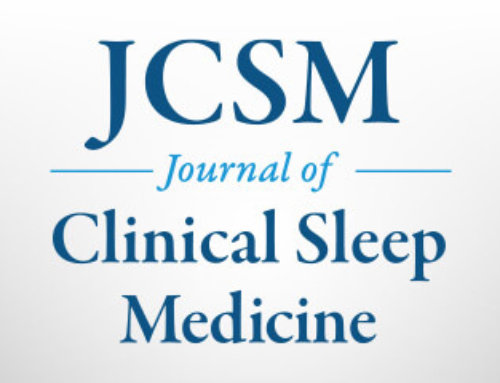Westchester, Ill. –A study in the Dec. 15 issue of the Journal of Clinical Sleep Medicine shows that after a one-hour delay of school start times, teens increased their average nightly hours of sleep and decreased their “catch-up sleep” on the weekends, and they were involved in fewer auto accidents.
When school started one hour later students averaged from 12 minutes (grade nine) to 30 minutes (grade 12) more self-reported nightly sleep. The percentage of students who got at least eight hours of sleep per weeknight increased significantly from 35.7 percent to 50 percent; students who got at least nine hours of sleep also increased from 6.3 percent to 10.8 percent. The average amount of additional weekend sleep, or “catch-up sleep,” decreased from 1.9 hours to 1.1 hours. Daytime sleepiness decreased, as reported by students using the Epworth Sleepiness Scale. Average crash rates for teen drivers in the study county in the two years after the change in school start time dropped 16.5 percent compared to the two years prior to the change, while teen crash rates for the rest of the state increased 7.8 percent over the same time period.
“It is surprising that high schools continue to set their start times early, which impairs learning, attendance and driving safety of the students,” said senior author Barbara Phillips, MD, director of the UK Healthcare Good Samaritan Sleep Center in Lexington, Ky.
A survey concerning the sleep habits of students from an entire county-wide school district was distributed before and after a change in school start times. In April 1998, (Year One), a total of 9,966 students (66 percent of the total population of middle and high-school students enrolled in the county) from grades six to 12 completed questionnaires concerning their sleep habits on school nights and non-school nights and various aspects of daytime functioning. In April 1999, (Year Two), 10,656 students (72.8 percent of the total population of middle and high-school students enrolled in the county) filled out the same questionnaire. School times during Year One were 7:30 a.m. for high schools and 8 a.m. for middle schools. In Year Two high schools and middle schools started one hour later at 8:30 a.m. and 9 a.m.
Separate crash rates were computed for the county that changed high school start times and for the state as a whole. State-collected measures of collision statistics by age and residence of driver were used to compute crash rates per 1,000 licensed drivers for teen drivers before and after the change in school start times in both the county in which the start times changed and in the rest of the state where start times remained unchanged.
The county crash rates were considerably higher than the rest of the state prior to the change in school start times. According to the authors the elevated crash rates may have been caused by the fact that the study county was in the center of a rapidly expanding metropolitan area. Phillips attributed the decrease in auto accidents after the change in school start times to improved vigilance, as the students were able to get more sleep.
The authors report that both social and biological pressures appear to cause a shift in sleep patterns during the transition to adolescence, with the result that adolescents stay up progressively later. As a result, adolescents get an inadequate amount of sleep due to early school start times, which increases their daytime sleepiness and may in turn increase their odds of crashing their vehicles while driving.
The Journal of Clinical Sleep Medicine (JCSM) contains published papers related to the clinical practice of sleep medicine, including original manuscripts such as clinical trials, clinical reviews, clinical commentary and debate, medical economic/practice perspectives, case series and novel/interesting case reports. In addition, the JCSM publishes proceedings from conferences, workshops and symposia sponsored by the American Academy of Sleep Medicine or other organizations related to improving the practice of sleep medicine
For a copy of the study, “Adolescent Sleep, School Start Times, and Teen Motor Vehicle Crashes,” or to arrange an interview with an AASM spokesperson, please contact Kelly Wagner, AASM public relations coordinator, at (708) 492-0930, ext. 9331, or kwagner@aasm.org.
AASM is a professional membership organization dedicated to the advancement of sleep medicine and sleep-related research. As the national accrediting body for sleep disorders centers and laboratories for sleep related breathing disorders, the AASM promotes the highest standards of patient care. The organization serves its members and advances the field of sleep health care by setting the clinical standards for the field of sleep medicine, advocating for recognition, diagnosis and treatment of sleep disorders, educating professionals dedicated to providing optimal sleep health care and fostering the development and application of scientific knowledge.
###








